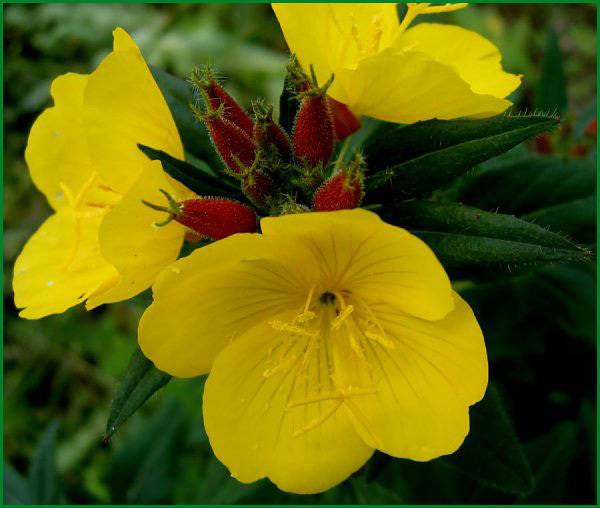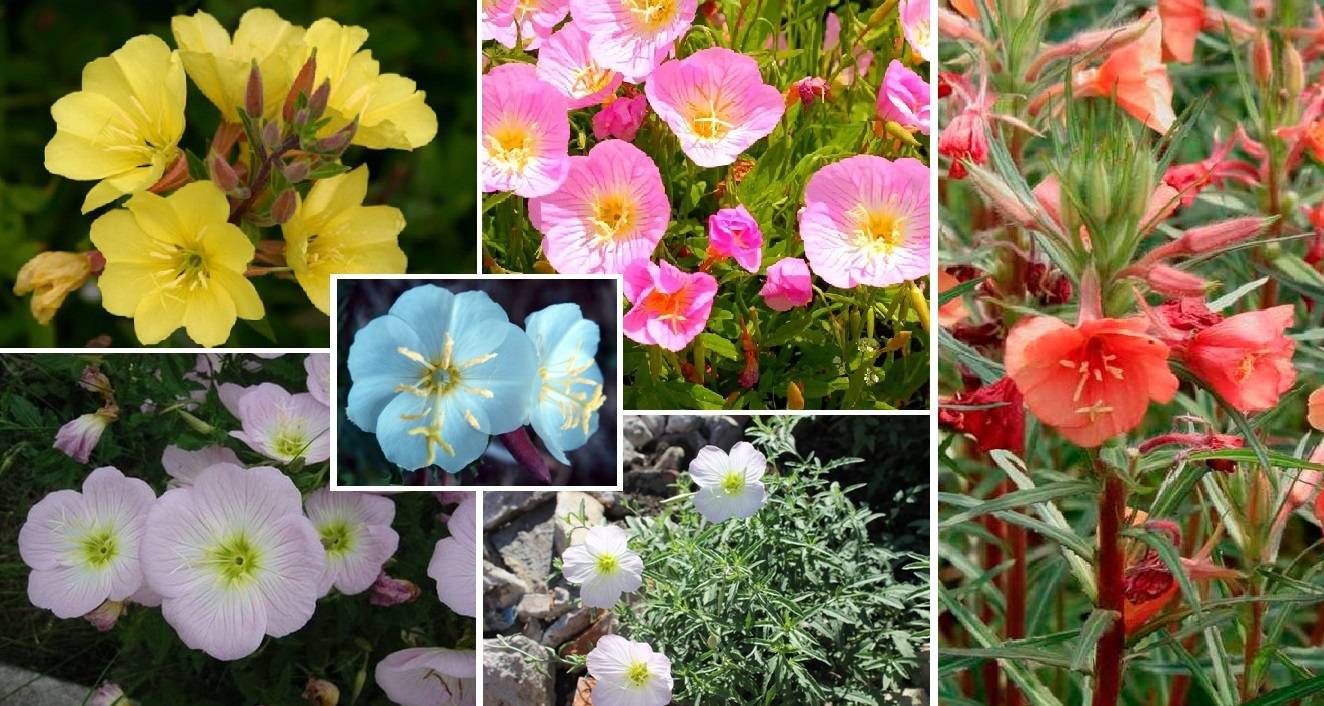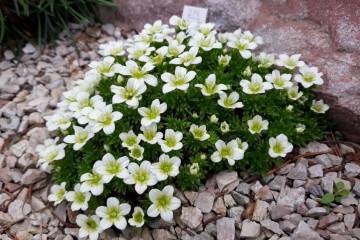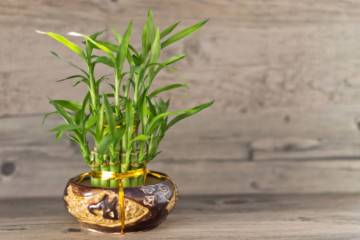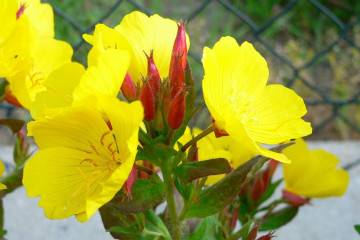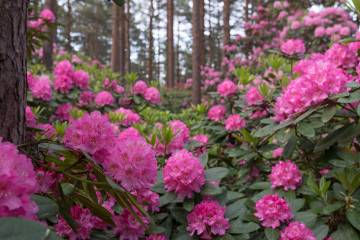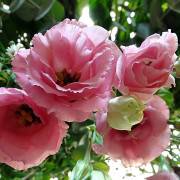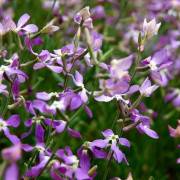Perennial evening primrose (flower): planting and care
Content:
- Evening primrose legends and other names
- Types and varieties
- Common evening primrose (Oenothera Odorata)
- Evening primrose quadrangular, or tetrahedral (Oenothera Tetragona)
- Enotera Drummondii (Oenothera Drummondii)
- Evening primrose (Oenothera Versicolor)
- Evening primrose (Oenothera speciosa)
- Biennial evening primrose (Oenothera biennis)
- Evening primrose (Oenothera Fruticosa)
- Enotera Missouri Solveig (Oenothera Missouriensis)
- Evening primrose (Oenothera Acaulis)
- Beneficial features
- Enotera in landscape design
- Evening primrose breeding methods
- Flower care
- Lunar diseases and pests
Evening primrose flower is gaining more and more popularity in landscape design. It can be found in many garden plots and city flower beds. The reason for this is the decorativeness and exceptional unpretentiousness of its many varieties.
Evening primrose legends and other names
Evening primrose yellow is a perennial with large cupped flowers. The name of the flower is of Greek origin. It is formed from words that literally mean "wine" and "wild beast." The legend about evening primrose says: if you sprinkle the evening primrose bud with wine and let any animal breathe in its aroma, then it will obey man, becoming tame.
Types and varieties
Varieties of the evening star can differ significantly from each other in the height of erect or creeping shoots (from 20 to 200 cm). Stems and foliage are covered with a harsh edge. Evening primrose petals can be pink, bright yellow, white, reddish, or even blue. It begins to bloom at nightfall or in cloudy weather, but there are varieties that bloom in daylight.
Common evening primrose (Oenothera Odorata)
A plant with daytime flowering can reach a height of 1 m. The flowers of this evening primrose are yellow with a bright rich aroma. It takes root well not only in sunny, but also in shady corners of the garden.
Evening primrose quadrangular, or tetrahedral (Oenothera Tetragona)
The bushes of this perennial frost-resistant variety are formed by upright stems, reaching a height of 70 cm. The buds collected in thyroid inflorescences can be of various shades of yellow, depending on the variety. Flowering lasts throughout the summer.
Popular varieties:
- Sonnenwende (rich yellow buds, green foliage);
- Hohes Licht (pale yellow buds);
- Fryverkeri (dense yellow buds, red foliage).
Enotera Drummondii (Oenothera Drummondii)
An annual plant, the height of various varieties of which varies from 20 to 80 cm. The leaves are light green, the flowers are large up to 7 cm in diameter. Flowering lasts from June until the onset of autumn cold weather.
Evening primrose (Oenothera Versicolor)
A two-year-old tall (up to 1.5 m) variety that prefers illuminated areas. One of the most popular varieties is Sunset Boulevard, whose reddish shoots form small bushes up to 30 cm in diameter. Dark orange buds bloom in August.
Evening primrose (Oenothera speciosa)
It differs in flexible shoots from 20 to 60 cm in height, the color of the petals varies from white to rich pink, the flowers reach a size of 5 cm. This variety blooms mainly in July-August. Due to the low frost resistance, shelter from the cold weather or moving to the basement for the winter is necessary.
The most common varieties:
- Siskiyou;
- Evening rose;
- Silk kiss;
- Orchid pink.
Biennial evening primrose (Oenothera biennis)
The most popular in the southern regions is an erect tall (up to 2 m) biennial species. The leaves are long, up to 20 cm, the flowers are large lemon-yellow. It blooms for a long time, from June to October. The Vechernyaya Zarya variety is distinguished by a height of up to 90 cm and flowers of a golden-red hue.
Evening primrose (Oenothera Fruticosa)
One of the most unpretentious bush plant species, reaching a height of 1.5 m. Strong branchy stems. The flowers are sunny yellow, about 5 cm. The leaves are small, oval, elongated, densely covering the shoots. In summer, the foliage retains a dark green color, and by autumn it turns reddish.
Enotera Missouri Solveig (Oenothera Missouriensis)
A low-growing species with branched creeping stems that have the ability to grow rapidly. Long bloom: from June to the first night frosts. The flowers of evening primrose Missouri yellow with a golden tint are large (up to 10 cm), they look like a rounded bowl. The aroma is light and subtle with a hint of citrus.
Evening primrose (Oenothera Acaulis)
The shape and size of the leaves of this species in the daytime have a certain similarity with the hosts. At night, the plant is covered with few but beautiful yellow flowers that form in a rosette of leaves. The buds appear from June to mid-September. The variety is undemanding to care for and is adapted to winter cold.
Beneficial features
For medicinal purposes, oil, seeds and plant rhizomes are used. Evening primrose preparations stop inflammatory skin processes, increase vascular tone, lead to a normal blood cholesterol level, prevent the formation of blood clots and have a beneficial effect on the work of the heart.
Enotera in landscape design
Landscapers typically include perennial evening primrose varieties in their flower beds to create contrast. Tall varieties look great in the background of group plantings, and creeping ones - when decorating the foreground. In addition, it is possible to use the donkey in alpine slides, flower beds, rabatkas, to decorate gazebos, fences and terraces.
The combination of evening primrose with other flowers in the flower bed
Lunnik goes well with many garden plants, both in appearance and in the structure of the root system. It can be planted near peonies, bells, brunners, daylily thickets, ageratum, alissum, astilba, veronica and delphiniums. The best combinations are obtained with flowers whose petals are lilac, red and white.
Evening primrose breeding methods
Growing perennial evening primrose on a personal plot is not difficult. It is propagated in several ways: seedlings are grown from seeds or immediately planted in open ground, and the bush is divided. The division procedure can be carried out both in spring and in autumn, when the plant is not in the flowering phase.
Growing evening primrose seedlings from seeds at home
The method of propagation by sowing seeds for seedlings is the most popular. They start it from the end of winter, planting seeds in any convenient container filled with soil with neutral acidity.The crops are covered with foil and placed on a lighted windowsill in a room with a temperature of about 20 ° C, periodically airing. When the seedlings grow up, each seedling is planted in a separate container.
Moistening of young plants is carried out by gentle spraying after the topsoil has dried out. A couple of weeks before planting in the ground, young plants are hardened by taking them out into the open air.
Choosing a seat for landing
Perennial Enotera takes root equally well and feels great in sunlit areas and in shady corners of the garden. When choosing a place for planting evening primrose, you must take into account a number of conditions:
- lack of stagnation of moisture in the selected place;
- soil with neutral acidity;
- not too much shading.
Seed preparation for sowing
To speed up the process of germination of seeds, it is recommended to stratify them. For this purpose, the seeds are placed in the refrigerator, pre-etched in a fungicidal preparation and wrapped in a damp cloth.
Evening primrose planting rules
When starting to plant evening primrose, the selected area is dug up, adding a little humus to the soil. The earth is moistened and seeds are placed in it. Seeds are distributed in planting holes, after mixing with a small amount of river sand.
Flower care
Night primrose is extremely unpretentious. The plant will develop well even on not very fertile soil, it is enough to regularly fertilize. This flower does not have to be painstakingly looked after, it will delight with bright buds throughout the summer.
Top dressing and fertilization
Although the plant is unpretentious, it should still be fed a couple of times during the season. For this, a complex mineral composition or wood ash is quite suitable. If you ignore the need for fertilization, then the lack of phosphorus and potassium can lead to fragmentation of flowers and a reduction in the flowering period. You should also not be zealous: an overfed plant can begin to build up green mass to the detriment of the formation of flowers or even get sick.
Watering rules
At normal rainfall, evening evening, it is sufficient to provide infrequent watering. The procedure is carried out no more than once a month, pouring about 2 buckets of water on 1 m² of the area planted with evening primrose. In case of dry or excessively rainy weather conditions, the irrigation regime should be adjusted.
Rejuvenation and transplant
All types of evening primrose tend to grow rapidly so that several years after planting in the ground, old stems are in the center of the bush, and young shoots are closer to the outer edge. So that the plant does not lose its decorative effect, it is recommended to plant it once every 2 years.
The soil at the planting sites of the separated bushes is mixed with some wood ash. The pits are placed 50 cm apart so that the plant has enough space to grow. Carrying out the division of the rhizome, it is necessary to act very carefully, otherwise the plant can be severely damaged.
Pruning evening primrose and preparing for winter
The evening primrose pruning procedure is performed only 1 time per season - in preparation for winter, all shoots are cut to ground level. After that, the bush is mulched to a height of at least 10 cm with any natural material that is available on the site.
Lunar diseases and pests
A perennial donkey is practically not susceptible to diseases. A key factor that can put a plant at risk of disease is over-watering. In this case, foci of rot may form on the plant, which is eliminated with the help of antifungal drugs.
Of the pests, evening primrose is annoyed by caterpillars. They should be collected by hand, and the bushes themselves should be treated with insecticides.The procedure is repeated after 5-7 days in accordance with the description of the tool.
Knowing the rules of planting and caring for perennial evening primrose, you can easily start growing a flower. Having landed it on the site once, the gardener will not have problems with this plant, since with a minimum of procedures, the flower garden will always delight the eye.
